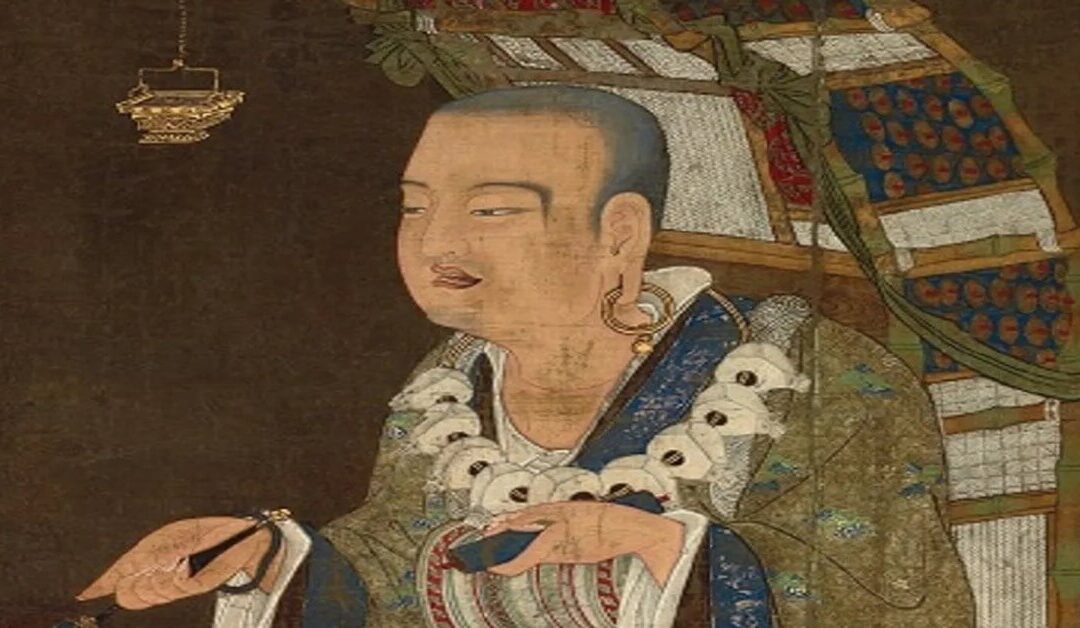
Hiuen Tsang-A Note (600-664 AD)
Hiuen Tsang was born in China in 600 AD. He was attracted to Buddhism from his childhood. Thus, he became a Buddhist monk at the age of 20. Later, he had a great desire to come to India.
His purpose:
1. Dream of seeing India, the birthplace of Buddha and the motherland of Buddhism.
2. Desire to become holy by undertaking a pilgrimage to places associated with Buddha.
3. Desire to study Buddhist scriptures in their original language.
4. Plan to translate Buddhist scriptures into Chinese.
5. Desire to bring Buddha’s relics, idols and some Buddhist works to China.
6. The vision to write a work about the things he saw and heard in India and his experiences. At that time, Chinese people had to get permission from the emperor to go abroad. But when the Chinese emperor did not give permission, Hiuen Tsang was very upset. He decided to reach India by any means. Without telling the emperor, he ignored him and set off for India.
He crossed the Indus River and reached Takshashila by walking along the Chinese border. Then he reached Kashmir and stayed there for two years. There he studied Buddhist scriptures. Then he reached the capital of Harsha, the king of the North. The fact that a Chinese had undertaken a pilgrimage to India and was a great scholar of Buddhism attracted Harsha. Harsha developed a close friendship with him. He even gave Duan Tsang a ‘royal hospitality’. Under his influence, he converted to Buddhism. To receive him, he held the Kannauj and Prayag conferences. Both were led by Duan Tsang. He finally proclaimed the supremacy of Buddhism. He defeated many Hindu and Jain scholars at the Kannauj conference, and was honored by Harshavardhana by riding him on an elephant.
From 630 to 644 AD, Huyan Tsang traveled throughout India. The places he visited as a pilgrim were Kapilavastu, Gaya, Kushinagar, Benares, as well as Kashmir, Gandhara, Andhra, Kanchi, Maharashtra and Karnataka. While visiting Gandhara, he saw the Bamiyan Buddha. He also visited the empire of Pulakesiya. Then he praised his brave deeds, the generosity of the Kannadigas and the richness of his heart.
While returning from India, he took the relics and idols of Buddha with him. He returned to China (in 644 AD) with 657 palm-leaf scriptures collected here, loaded on 20 horses. There was a fear of offending the king. But the Chinese king received him with respect. Qian Tsang began to record the things he saw in India in a book called Si-yu-ki. He also translated many Buddhist works into Chinese. He also established a sect called ‘Hungfu’ and spread Buddhism.
Huian Tsang recorded many ten things in his book Si-yu-ki. He wrote about the political, social, economic and religious conditions of that time, the customs and beliefs of the people, the traditional surrenders, the practice of untouchability, the geographical situation, the honesty of the people, the situation of Buddhism, etc. These are valuable documents for the creation of history of that time. According to Dr. V.A. Smith, the historical importance of Si-yu-ki cannot be overstated. Therefore, it is fitting to call Duan Tsang the ‘King of Travelers’ (King of Travelers).
